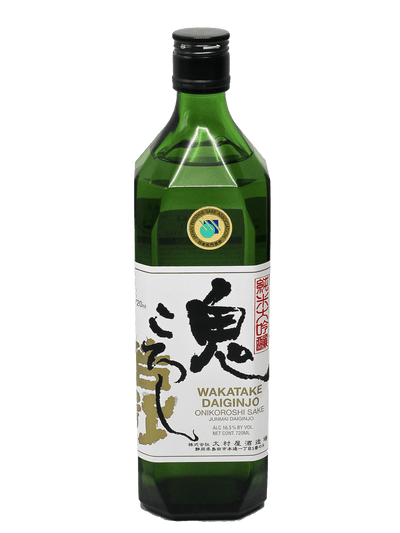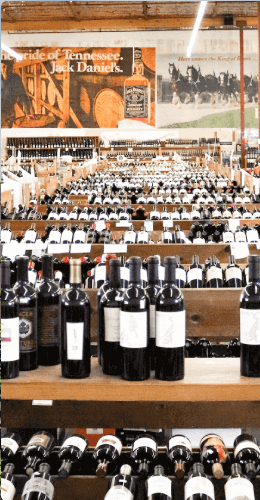Stag’s Leap: A Winery, Yes, but also an Appellation

The phrase “Stag’s Leap” has garnered a huge amount of attention because of the 1976 wine tasting held in Paris at the Intercontinental Hotel, part of American bicentennial activities in the City of Light put on by a British wine merchant. This competition between French and United States wines made Stag’s Leap Wine Cellars so famous that a bottle of the 1973 vintage lies in the collection of the Smithsonian Institution. What happened, if you haven’t heard, is that a blind tasting pitted California red and white wines against top-shelf French wines made from the same grape varieties. Napa Valley Cabernet Sauvignon faced off with Bordeaux first growths.
Thus, the Stag’s Leap Wine Cellars 1973 S.L.V. Cabernet Sauvignon was compared against 1970 vintage, first wines from Chateau Mouton-Rothschild and Chateau Haut-Brion, among others. The judges were French wine experts. The expectation was clear: the U.S. wines would come in last. Instead, the Stag’s Leap garnered 127.5 points while the Mouton-Rothschild got 126, and others trailed behind. “The unthinkable happened,” says Stag’s Leap Wine Cellars. “The 1973 S.L.V. Cabernet Sauvignon was judged the best.”
More surprising was that the winery was established in 1970 and had to plant a new vineyard; 1972 was its first vintage, and the winning wine was produced from vines about 3 years old.
Today, a lot of people associate Stag’s Leap only with the winery that won what’s become known as the Judgment of Paris. In fact, though, Stag’s Leap is an American Viticultural Area (AVA) within the Napa Valley AVA, and home to other wine producers. Stag’s Leap Wine Cellars continues to produce top-notch wines, of course, but the AVA has more to offer.
Stag’s Leap AVA was the first AVA that won approval based on the distinctive identity of its soils, part of something the French call terroir. About one mile wide and three miles long, the AVA holds roughly 2,700 acres, about half of which are planted in vineyards. Stag’s leap is found in the eastern portion of the Napa Valley, five miles north of the town of Napa and east of the eponymous river along the Silverado Trail. There are two broad soil types: those resulting from ancient volcanic eruptions slowly eroded from the Vaca Mountains and those in the lowland areas, where a much broader Napa River once flowed. Here, river sediment created gravel-rich soils, a remarkable blend of loams with a clay-like substructure. Both soil types reduce vine vigor, which is great for producing flavor- and aroma-filled wines. Days are hot, often with reflected sunlight, but marine air flows north from the San Pablo Bay through the Stags Leap District corridor causing low nighttime temperatures. Overall there is “a longer growing season of warm days and cool nights—perfect for late-maturing varietals such as Cabernet,” says the Stag’s Leap District Winegrowers association.
About 80% of wine produced in the AVA is Cabernet Sauvignon or Merlot. The Cabs are known for being almost inky black in color, indicating great concentration resulting from the vineyard terroir.
To judge Stag’s Leap terroir, I suggest not only something from Stag’s Leap Wine Cellars, but from other wineries as well. The 2018 Stag's Leap Wine Cellars Cask 23 Cabernet Sauvignon is a flagship wine from the Judgment of Paris winner. Long streaks of blueberry, raspberry and black cherry flavors demonstrate this best red wine’s range and freshness. “Graphite and gently singed alder notes support the finish, with a backdrop of anise and vanilla hanging quietly in reserve,” says Wine Spectator. In the same price range for buying red wines online is the 2015 Shafer Hillside Select Cabernet Sauvignon, which won 98 points from the Wine Advocate: “gregarious scents of crème de cassis, warm black cherries, plum preserves and Indian spices with hints of lilacs, garrigue, stewed tea and cigar box plus a waft of charcuterie.” Finally, consider the more affordable 2018 Cliff Lede Stags Leap District Cabernet Sauvignon, available from Bottle Barn for shipping across the USA. It’s a blend of majority Cabernet Sauvignon with 13% Merlot, 6% Petit Verdot, 3% Malbec and 2% Cabernet Franc. “A fervor of succulent red- and black-currant and licorice,” says Wine Spectator. “Thick, rich and intensely structured, it possesses a mineral-like earthiness of crushed rock and enduring structure."
Written By: - Charlie Leary


















Leave a comment